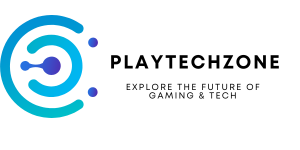By: Peter, Content Writer at Playtechzone.com
As an avid follower of technological advancements and their impact on our world, I’m constantly drawn to stories where innovation intersects with environmental responsibility. The ambitious project to restore Lake Texcoco in Mexico City is one such story, showcasing how a concrete jungle can be transformed into a thriving urban oasis.
This isn’t just about building a park; it’s about redefining the relationship between urban development and ecological restoration. It’s about learning from the past, embracing the present, and designing for a sustainable future.
Here’s a glimpse into this fascinating endeavor:
I. A Lake Lost and (Almost) Forgotten:
- The Rise and Fall of Texcoco: Once a sprawling lake system crucial to the Aztec civilization, Lake Texcoco fell victim to centuries of urbanization, reduced to a shadow of its former self.
- A Controversial Cancellation: The construction of a new international airport on the desiccated lakebed further threatened Texcoco’s existence. However, in 2018, amidst public outcry and accusations of corruption, the project was abruptly halted.
II. A New Vision Takes Root:
- Texcoco Ecological Park (PELT): From the ruins of the abandoned airport, a bold plan emerged – to create one of the world’s largest urban parks, a “new Tenochtitlan” as envisioned by President Andrés Manuel López Obrador.
- Beyond Traditional Restoration: Leading the charge is Mexican architect Iñaki Echeverria, who envisions a hybrid ecosystem – a blend of artificial and natural elements designed to revitalize the entire Valley of Mexico.
III. Breathing Life Back into a Barren Landscape:
- Water as a Catalyst: Central to the project is the reintroduction of water. Canals are being rerouted, seasonal pools created, and the natural flow of nine rivers restored, aiming to combat subsidence and flooding while replenishing depleted aquifers.
- A Mosaic of Habitats: With over 1.8 million native plants being cultivated, the park aims to attract a diverse array of species, restoring a vital migratory corridor and creating a haven for birds, insects, and other wildlife.
- Economic and Social Sustainability: Beyond its ecological benefits, Texcoco Park is designed to generate employment, improve air quality, and sequester carbon emissions. Plans are underway to support local communities through initiatives like native plant nurseries and the cultivation of spirulina algae.
IV. Navigating the Challenges of Restoration 2.0:
- Balancing Historical Preservation with Present Needs: The project grapples with the complexities of restoring an ecosystem irrevocably altered by human intervention. Finding a balance between recreating the past and adapting to the present is crucial.
- Engaging with Local Communities: Addressing the concerns of communities living around Lake Texcoco is paramount. Ensuring their access to resources, respecting traditional practices, and incorporating their knowledge into the project are vital for its long-term success.
V. Lessons from Texcoco: A Blueprint for the Future?
- Embracing Unconventional Solutions: Texcoco Park exemplifies the potential of “Restoration 2.0” – an approach that goes beyond replicating the past to create hybrid ecosystems that meet the needs of both nature and humans.
- The Power of Collaboration: The project highlights the importance of collaboration between scientists, designers, policymakers, and local communities in tackling complex environmental challenges.
VI. FAQs:
1. What is the estimated cost of the Lake Texcoco Ecological Park project?
The project has a budget of $1 billion.
2. How will the park address the issue of Mexico City’s sinking land?
The restored water bodies will help replenish the depleted aquifers beneath the city, mitigating subsidence.
3. What opportunities does the park offer for local communities?
The park will create jobs, support traditional practices like salt harvesting and spirulina cultivation, and potentially foster new sustainable industries.
VII. Further Exploration:
- The Society for Ecological Restoration
- Ramsar Convention on Wetlands
- United Nations Environment Programme (UNEP) – Ecosystem Restoration
The rebirth of Lake Texcoco is a testament to human ingenuity and our capacity to rectify past mistakes. It serves as a beacon of hope, demonstrating that even in the face of daunting environmental challenges, innovative solutions can pave the way for a more sustainable and harmonious future. It’s a story that resonates deeply with our desire to reconnect with nature, even in the heart of our bustling cities.
